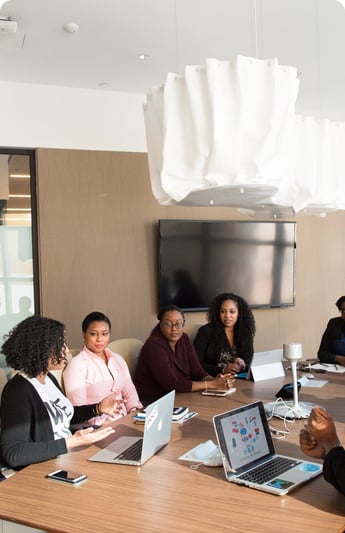
Last year, I was a keynote speaker for a transportation conference. The audience seemed very distracted, so I decided the speech should be very interactive. It took a different slant, delving into why it is so easy to defend the status quo and so hard for teams to innovate.
The audience went sour when I suggested that innovative and creative thinking should become a part of everyday work. Innovative thinking is the flow and spark that will boost morale and keep people focused and inspired. This message is what their leadership wanted, but teams were resisting it.
It seems the audience resistance set in when people concluded that they do not have jobs that require them to be creative. Much of their work is routine. They unanimously agreed that they signed up for a job that didn't require a lot of change.
According to the Harvard Business Review, 42% of people never think outside the box.
They suggest increasing employee engagement means encouraging workers to break the rules and be innovative. Many people would instead protect the existing state of affairs than try to invoke change.
Some team members won't have an entrepreneurial mindset that requires them to pivot and adjust to current circumstances. They would rather clock in and clock out and do the same routine job every day. We have to challenge this status quo to move teams forward.
WHY WE RESIST INNOVATION
Thinking in innovative ways does utilize a different type of thought and a different part of your brain. It takes time, and it doesn't produce immediate results, which is why it should be encouraged by leadership. In most organizations, it is not part of the job description, but it should be.
Consider the employee who defends the status quo, does this conjure up a picture of an engaged, motivated, and highly productive employee? No. What comes to mind is a rigid, process-oriented, sluggish sort who does the same thing over and over and resists any change or improvement.
Someone creative is always on his toes, questioning the work, the routines, and searching for new ways to exceed expectations. In his search for meaning, he is naturally more productive and motivated.
I would also argue that creativity underlies all advancement. We can manage growth, or we can recreate and challenge it.
LEADERS NEED TO BACK CHANGE
The challenge is leaders say they encourage innovation, but the excitement quickly fades, and teams go back to the way they were. Once they keep hearing this message with no follow-through or commitment, people start to tune it out. Leaders need to include the team in the discussion about change and make them accountable for it.
Organizations can stifle creativity because they try to control people to the extent that thinking outside the box is tricky. This is where the audience resistance came from during the motivational speech, challenging the status quo in many organizations is frowned upon and encouraged at the same time. It creates a mixed message.
From an early age ( think grade school), institutions define our lives. They teach us how to act and how to think. The older we are, the longer we have had conformity hammered into us our entire existence. Society has changed a lot, so have our parenting and teaching styles. Today, young people are encouraged to speak up and challenge the status quo. They expect innovative work environments.
Thus, now leaders have to be able to balance generational challenges in change. To make change work, you have to challenge the status quo first. Understand the dynamics that hold teams back and push through resistance.
I encourage employees to take one or two creative leaps of faith in a week and see what the results are. Some examples of things that push the boundaries and engage original thought are:
- Ask, is there a better way? Brilliant ideas emerge when you challenge what is
- Look at other industries for inspiration.
- When something goes wrong, or you get negative feedback, search for an entirely new way to do it. Include other feedback.
- Ask: What would threaten my job? and look for ways to challenge these threats
- Build on ideas. When ideas erupt, they will need tweaking to become solidly integrated. Keep adding more details, advice, and perspective

